Power
These resources are useful in the discussion of a wide range of topics: teaching, learning, clinical supervision, leadership, bullying and abuse.
What words would you choose to define the concept of power?
Authority, control, respect, fear, rule, corruption, responsibility, status, hierarchy, privilege, influence, wisdom, leadership, strength
Do any of these words stand out to you?
Are there any words you would add to the list?
The concept of power is complex and arises in many aspects of our lives.
To help your exploration of this topic we have divided the resources into categories.
Start by watching this short clip from The King’s Speech.
The King in this film is George VI, known to his family as Bertie. Bertie unexpectedly became king when his elder brother Edward VIII abdicated. With the increase in popularity of radio and public broadcasts, King George VI was expected to speak directly to his subjects. This was challenging as he had suffered from a stammer since childhood. King George’s wife Elizabeth was determined to help and booked an appointment with a renowned speech therapist. The scene starts with the King arriving for his first appointment.
Watch the clip again and consider:
Who holds the power as the ‘consultation’ progresses.
What does Lionel do and say to alter the usual power dynamic between King and subject?
Why does Lionel say, “it’s better if we are equals”?
How does Lionel use authority?
What does Lionel do to create an environment for learning?
This film clip lends itself to a one-hour tutorial or teaching session about power or learning.
There are several things that stand out about the positive learning environment that Lionel creates:
He sets ground rules.
He knows the backstory of his learner
He suggests that learning (changing) should be a choice.
He appropriately challenges Bertie (even done well it’s interesting how uncomfortable this feels)
He provides solutions to help Bertie learn and build his confidence.
Teacher & Student (learning, teaching & clinical supervision)
Consider the power dynamic between the teacher and student in these two pictures.
In the first picture William Gilbert is introducing Queen Elizabeth I to the power of magnetism.
Demonstrating the Magnet to Elizabeth the First by William Gilbert 1598 Wellcome Collection Fair Use
In the second picture, a student is sitting with his teacher. Jaipur C18th
Authorship unknown
Have you ever considered the power dynamic that exists between you and your teacher/supervisor/trainee/student? How does this impact learning?
If you are helping someone learn, what steps do you take to ensure the relationship feels equal?
Should the power dynamic between teacher and student always be equal?

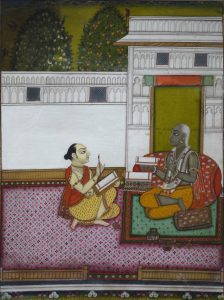
Doctor & Patient
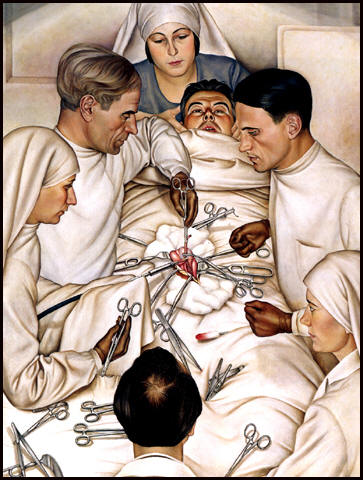
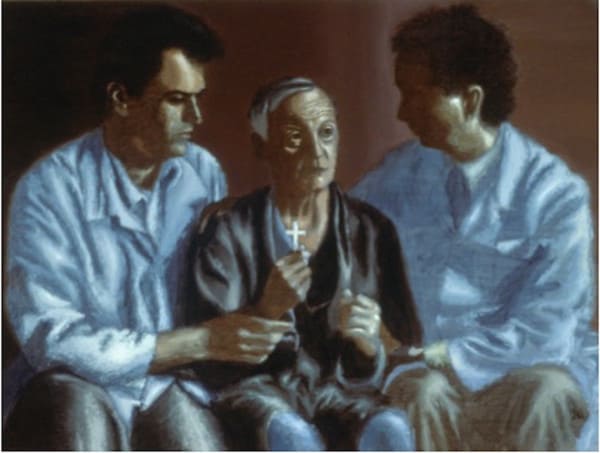
This picture has provoked useful discussion in seminars, so I hope the Archive is happy for me to reproduce it here in order for it to be used more widely in teaching.
Doctors often know more about a patient’s prognosis than the patient themselves, especially when discussing a terminal diagnosis. You can read more about this picture on the Robert Pope Archive
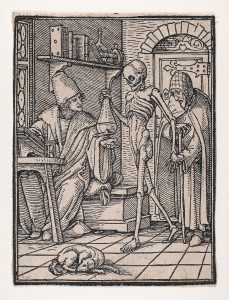
Modern medicine and surgery can save and extend life, providing the illusion that doctors hold power over death. In this picture, death is personified offering the doctor a sample of a sick elderly man’s urine, with the challenge: “Do you think you can save this man who is already in my power?”
Do you consider yourself to be powerful in your role as a GP?
Leaders in Society
When you think of a powerful person, who do you think of and why?
What do you think makes a good leader?
What behaviours or actions are associated with poor leadership?
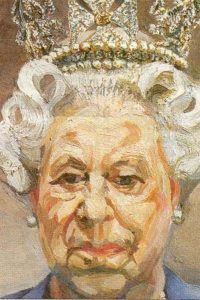
There are three people in this picture, The Queen, the artist and you, the viewer.
Consider these three perspectives. Who holds the power?
The National Portrait Gallery is a great resource to look at pictures of leaders past and present.
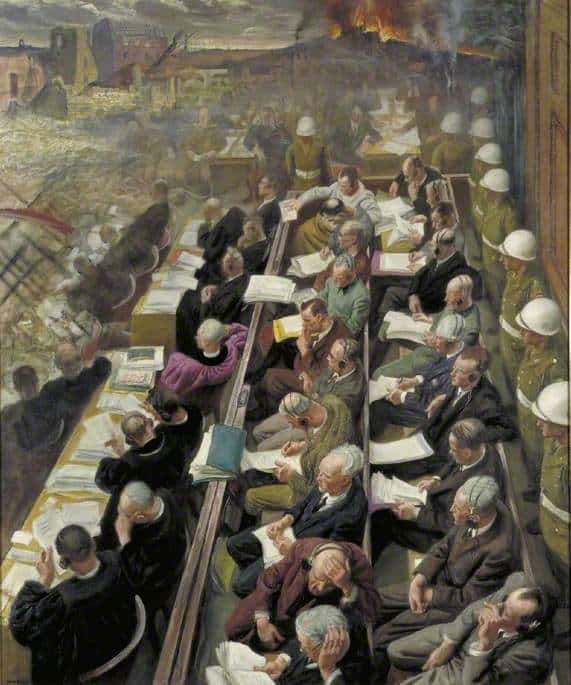
What gives someone power in society?
Consider this picture by Laura Knight. Knight was commissioned as a War Correspondent to paint the courtroom in Nuremberg where 21 German officers were tried for war crimes committed during World War 2.
‘Once-powerful men reduced to fearful spectators of their own imminent demise’ Philippe Sands, QC is Professor of Law at University College London
There are many classic novels which explore the abuse of power in society:
Animal Farm – George Orwell, first published 1945
1984 – George Orwell, first published 1949
Brave New World – Aldous Huxley, first published 1932
Men & Women (or adult & adult)
The abuse of power between adults can take many forms: physical and sexual violence, emotional dominance, coercion, and bullying and occurs in many settings, frequently at home in what should be a safe place.
Women suffering from domestic abuse often feel ashamed, and it is not always obvious to the doctor or shared openly by the patient.
Ruby Rumié’s exhibition captures 200 female survivors of domestic violence. Each participated in the artist’s healing ceremonies – they selected a ceramic vessel and breathed into it, symbolically releasing their pain. The vessels were then sealed up and labelled with the survivor’s initials.
Read more about this – The ritual that visualises the pain of domestic violence
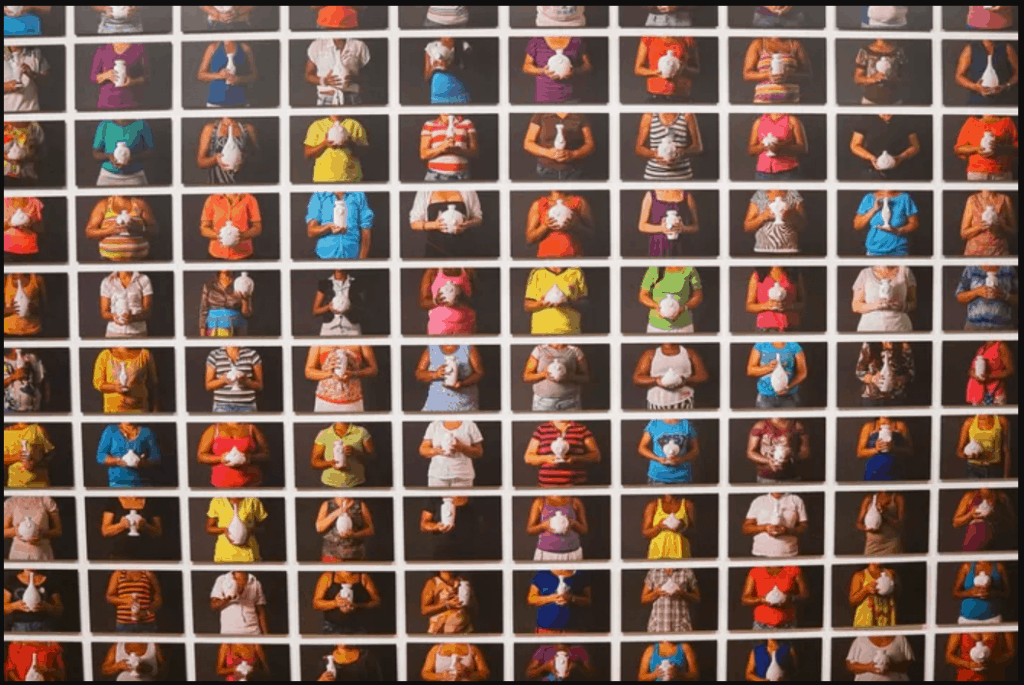
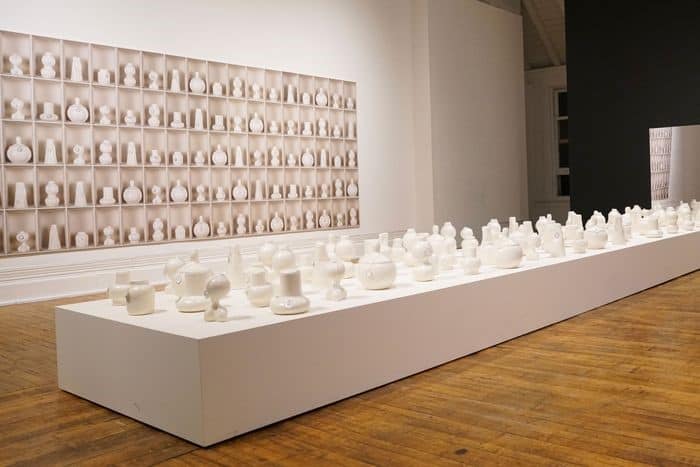
What were you wearing is a powerful exhibition created by Jen Brockman and Dr Mary Wyandt Hiebert inspired by the poem of the same title by Dr May Simmerling. The exhibition tackles the myth that a victim’s clothing contributed to their sexual assault. Victim’s outfits were recreated and displayed alongside their testimonies.
What I was wearing
was this:
from the top
a white t-shirt
cotton
short-sleeved
and round at the neck
this was tucked into
a jean skirt
(also cotton)
ending just above the knees
and belted at the top
underneath all this
was a white cotton bra
and white underpants
(though probably not a set)
on my feet
white tennis shoes
the kind one plays tennis in
and then finally
silver earrings, and lip gloss.
this is what i was wearing
that day
that night
that fourth of july
in 1987.
you may be wondering
why this matters
or even how i remember
every item
in such detail
you see
i have been asked this question
many times
it has been called to my mind
many times
this question
this answer
these details.
but my answer
much awaited
much anticipated
seems flat somehow
given the rest of the details
of that night
during which
at some point
i was raped.
and i wonder
what answer
what details
would give comfort
could give comfort
to you
my questioners
seeking comfort where
there is
alas
no comfort
to be found.
if only it were so simple
if only we could
end rape
by simply changing clothes
i remember also
what he was wearing
that night
even though
it’s true
that no one
has ever asked.
by Mary Simmerling
Other resources
TV and Film
I am Nicola C4 TV Drama
Books
Lucky Alice Sebold An autobiographical account of the author’s experience of being raped as a student
The Yellow Wallpaper by Charlotte Perkins Gilman. It is a seminal short story about postnatal depression and coercive control. One of the lines that stands out in this story is:
‘He is very careful and loving, and hardly lets me stir without special direction’
Adult & Child
The power dynamic that exists between adults and children is the cornerstone of developmental psychology, and is featured in countless books and research papers. It is covered in undergraduate and postgraduate curriculums and underpins safeguarding training.
Very simply, adults should use their power positively to nurture and shape a child’s safe passage from childhood to adulthood. When this power dynamic is abused the impact on the child is often catastrophic and life-changing.
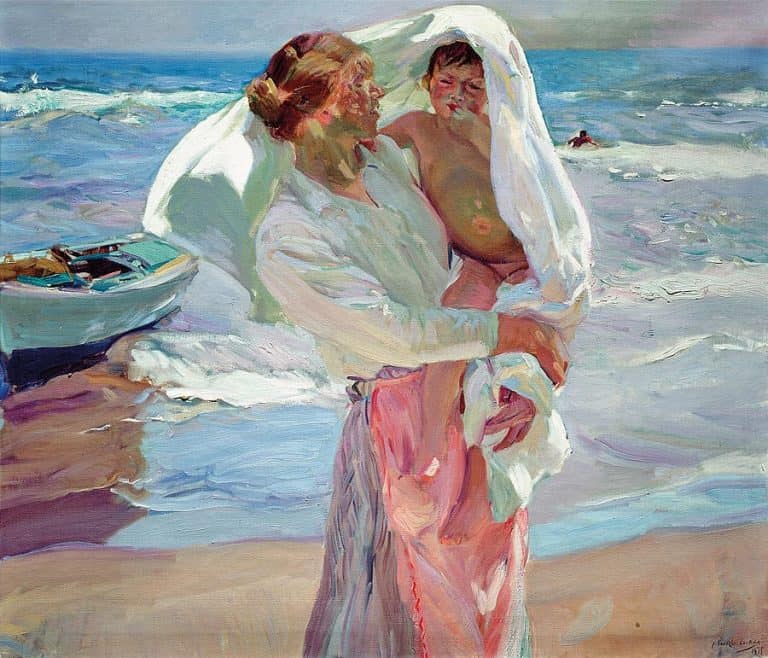
Use this painting by Sorolla to consider the relationship that should exist between adult and child.
Here are some more resources:
Books
Just a Child Sammy Woodhouse This tells the heartbreaking story of how a young girl from Rotherham was abused by her drug-dealing ‘boyfriend’, eventually giving birth to his baby, right under the nose of the very authorities who were meant to protect her.
Lolita Vladimir Nabakov (also a film) One of the most controversial novels of the 20th Century in which Poet, Humbert Humbert becomes obsessed with twelve-year-old Lolita.
The Lovely Bones Alice Sebold A fictional account of a girl who has been raped and murdered – from the viewpoint of the girl after death.
A Child Called It Dave Pelzer
The Girl With the Louding Voice Abi Daré This is the story of Adunni, a 14 year-old Nigerian girl who just wants to be heard- but a life of servitude, abuse, early marriage and rape prevents her from reaching her potential. Despite these challenges, Adunni still uses her voice to fight for her right to learn.
Take a look at these other suggestions
Films and Television
The Three Girls (2017) A dramatised version of the events surrounding the Rochdale child sex abuse ring, describes how the authorities failed to investigate allegations of rape because the victims were perceived as unreliable witnesses. (The Betrayed Girls is the documentary that followed the drama)
The Wonder (2022) (also a book by Emma Donogue) Set in Ireland shortly after the great famine the film follows the story of an English nurse sent to a rural village to observe a young ‘fasting girl’ who is seemingly able to miraculously survive without eating.
12 Years a Slave (2013)
Page created July 2021
Update 2023
